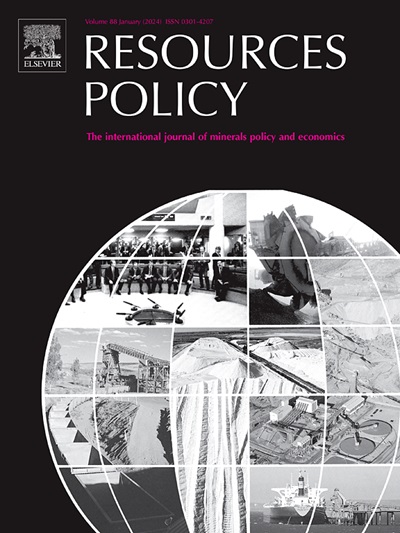Towards sustainable resource management: A national assessment of historical mining waste in Poland
IF 10.2
2区 经济学
0 ENVIRONMENTAL STUDIES
引用次数: 0
Abstract
In this study, we present findings from a comprehensive program in Poland aimed at identifying historical mining heaps, sedimentation ponds, and industrial waste dumps. This program is part of a broader initiative that evaluates past and present waste streams to determine their potential as secondary sources of metals, with a special emphasis on critical resources, aligning with Poland's Raw Materials Policy. This article primarily outlines the methodology used to create an inventory, analyze the identified sites, and draw conclusions regarding their suitability for future utilization. We highlight the importance of investigating historical waste heaps and processing related objects in the context of transitioning to a circular economy while also considering environmental constraints. We emphasize the critical aspects of the inventory process that provide essential information and stress the significance of a comprehensive historical waste inventory initiative. Additionally, we suggest a framework for evaluation that can be adapted for use in other regions, aiming to enhance recognition of domestic and regional resources. The aim is to present the methodological process of a wide-range historical mining heaps inventory program as well as its objectives and achievements - for other countries or surveys planned in the future.
Historical mining and processing activities in Poland have left numerous facilities containing waste mineral raw materials of varying types and sizes. The Polish Geological Institute – National Research Institute documented approx. 1400 of these objects, recording various parameters related to their dimensions, locations, and waste characteristics. The results are available in an open geodatabase named 'HAŁDY' (meaning ‘HEAPS’). Using the collected data, GIS software, and the multi-criteria analysis we conducted a thorough analytical assessment to identify objects with the highest potential as secondary sources of critical elements and potential for further re-use in other applications. The research revealed that waste heaps from hard coal mining, iron ore extraction, and polymetallic ore extraction are the most abundant in terms of quantity and that objects of significant size in Upper Silesia present the highest potential for detailed valorization. We also conducted detailed, site-specific analysis for 10 objects from different parts of the country, recommending accumulated waste for various possible services.
求助全文
约1分钟内获得全文
求助全文
来源期刊

Resources Policy
ENVIRONMENTAL STUDIES-
CiteScore
13.40
自引率
23.50%
发文量
602
审稿时长
69 days
期刊介绍:
Resources Policy is an international journal focused on the economics and policy aspects of mineral and fossil fuel extraction, production, and utilization. It targets individuals in academia, government, and industry. The journal seeks original research submissions analyzing public policy, economics, social science, geography, and finance in the fields of mining, non-fuel minerals, energy minerals, fossil fuels, and metals. Mineral economics topics covered include mineral market analysis, price analysis, project evaluation, mining and sustainable development, mineral resource rents, resource curse, mineral wealth and corruption, mineral taxation and regulation, strategic minerals and their supply, and the impact of mineral development on local communities and indigenous populations. The journal specifically excludes papers with agriculture, forestry, or fisheries as their primary focus.
 求助内容:
求助内容: 应助结果提醒方式:
应助结果提醒方式:


